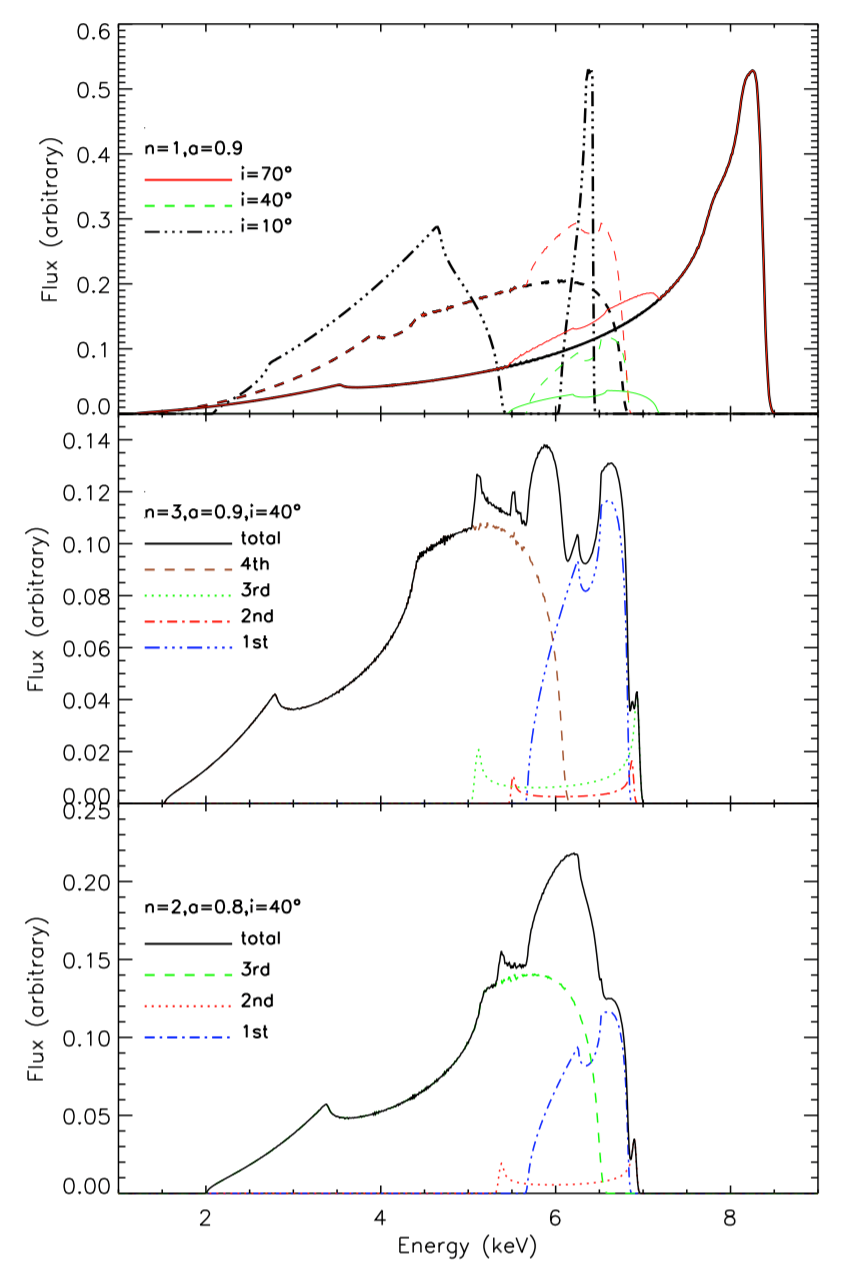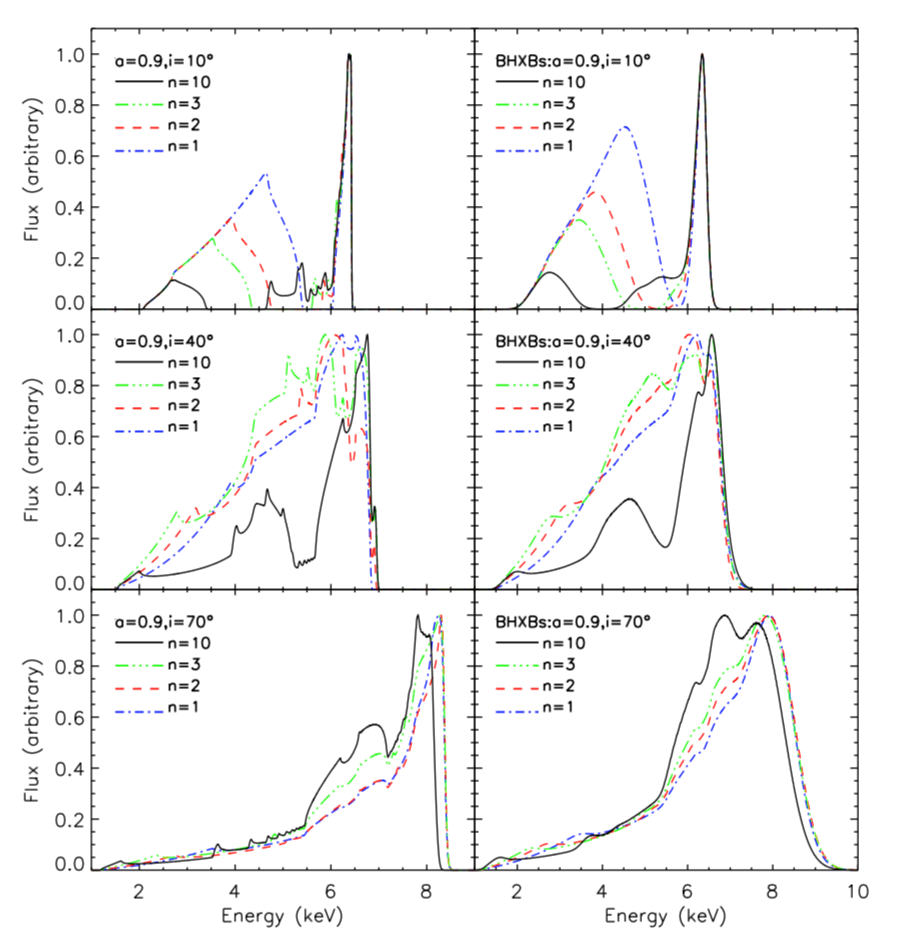

Authors: Xiao-Di Yu, Ren-Yi Ma, Ya-Ping Li, Hui Zhang, Tao-Tao Fang
Abstract: The clumpy disc, or inhomogeneous accretion flow, has been proposed to explain the properties of accreting black hole systems. However, the observational evidences remain to be explored. In this work, we calculate the profiles of Fe K{\alpha} lines emitted from the inhomogeneous accretion flow through the ray-tracing technique, in order to find possible observable signals of the clumps. Compared with the skewed double peaked profile of the continuous standard accretion disc, the lines show a multi-peak structure when the emissivity index is not very steep. The peaks and wings are affected by the position and size of the cold clumps. When the clump is small and is located in the innermost region, due to the significant gravitational redshift, the blue wing can overlap with the red wing of the outer cold disc/clump, forming a fake peak or greatly enhancing the red peak. Given high enough resolution, it is easier to constrain the clumps around the supermassive black holes than the clumps in stellar mass black holes due to the thermal Doppler effect.
The paper has been accepted for publication in MNRAS. Link